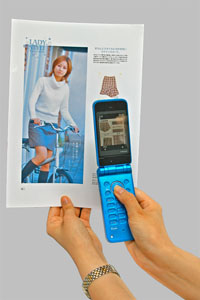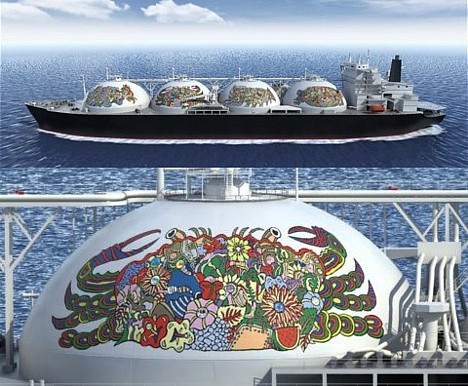 On September 13, Fujitsu unveiled a new type of "invisible" barcode, called FP (Fine Picture) code, which allows data to be embedded directly into color print photographs. FP code consists of a series of faint yellow lines -- said to be invisible to the naked eye -- which are overlaid on the photograph during the printing process. Once encoded, a photograph can retain its original quality while serving as an "object hyperlink" to websites that users can access via mobile phone.
On September 13, Fujitsu unveiled a new type of "invisible" barcode, called FP (Fine Picture) code, which allows data to be embedded directly into color print photographs. FP code consists of a series of faint yellow lines -- said to be invisible to the naked eye -- which are overlaid on the photograph during the printing process. Once encoded, a photograph can retain its original quality while serving as an "object hyperlink" to websites that users can access via mobile phone.
To use FP code, users must first download special free software to their camera-equipped phone. Then, when the camera is used to take a picture of an encoded photograph, the code is sent to a server where it is converted into URL data, which is used to connect the user's mobile phone to the corresponding website. Text, video and audio content can then be delivered directly to the user's phone.
The first examples of FP code will reportedly begin to appear in Japanese catalogs and magazine advertisements as early as October. If FP code is what Fujitsu claims it is, we may soon bear witness to the disappearance of unsightly barcodes and QR code (2D code) from print material.
One thing, though. If FP code is invisible, how will anyone know where to point their camera?
[Sources: Asahi Shimbun and Fujitsu press release]

